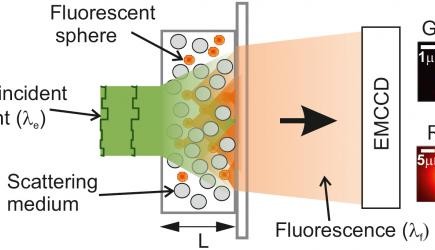Better LEDs with just a trick of the light!
May 02, 2016
on
on

By manipulating the incident light, researchers of the Complex Photonics Group at University of Twente in Enschede, The Netherlands, have turned light propagating in a layer of scattering nanoparticles into a rising diffusion curve.
By transforming the diffusion curve the result is more light energy being held inside an opaque layer which could lead to better yields for solar cells or LEDs. Even in a medium characterized by randomness, like a collection of non-organized particles that all scatter light, the net spreading of light is uniform. This is typical for diffusion.
The randomness in the experiments exists in a layer of white paint. Light that is falling on the collection of zinc oxide particles the paint is made of, will be scattered by the particles and will start interfering with light, scattered from neighbouring particles. Nevertheless, it will spread out in a uniform way. Theoretically, the energy density will show a linear fall-off with penetration depth.
The Tukker scientists went beyond just altering the layer only the light. The ‘wave front shaping’ technique used was developed earlier on, leaving the way open to program the light waves in such a way that they choose the best pathways and show a bright light spot at the backside of the layer. The technology is also suitable for active control of the diffusion process.
By transforming the diffusion curve the result is more light energy being held inside an opaque layer which could lead to better yields for solar cells or LEDs. Even in a medium characterized by randomness, like a collection of non-organized particles that all scatter light, the net spreading of light is uniform. This is typical for diffusion.
The randomness in the experiments exists in a layer of white paint. Light that is falling on the collection of zinc oxide particles the paint is made of, will be scattered by the particles and will start interfering with light, scattered from neighbouring particles. Nevertheless, it will spread out in a uniform way. Theoretically, the energy density will show a linear fall-off with penetration depth.
The Tukker scientists went beyond just altering the layer only the light. The ‘wave front shaping’ technique used was developed earlier on, leaving the way open to program the light waves in such a way that they choose the best pathways and show a bright light spot at the backside of the layer. The technology is also suitable for active control of the diffusion process.
Read full article
Hide full article


Discussion (0 comments)